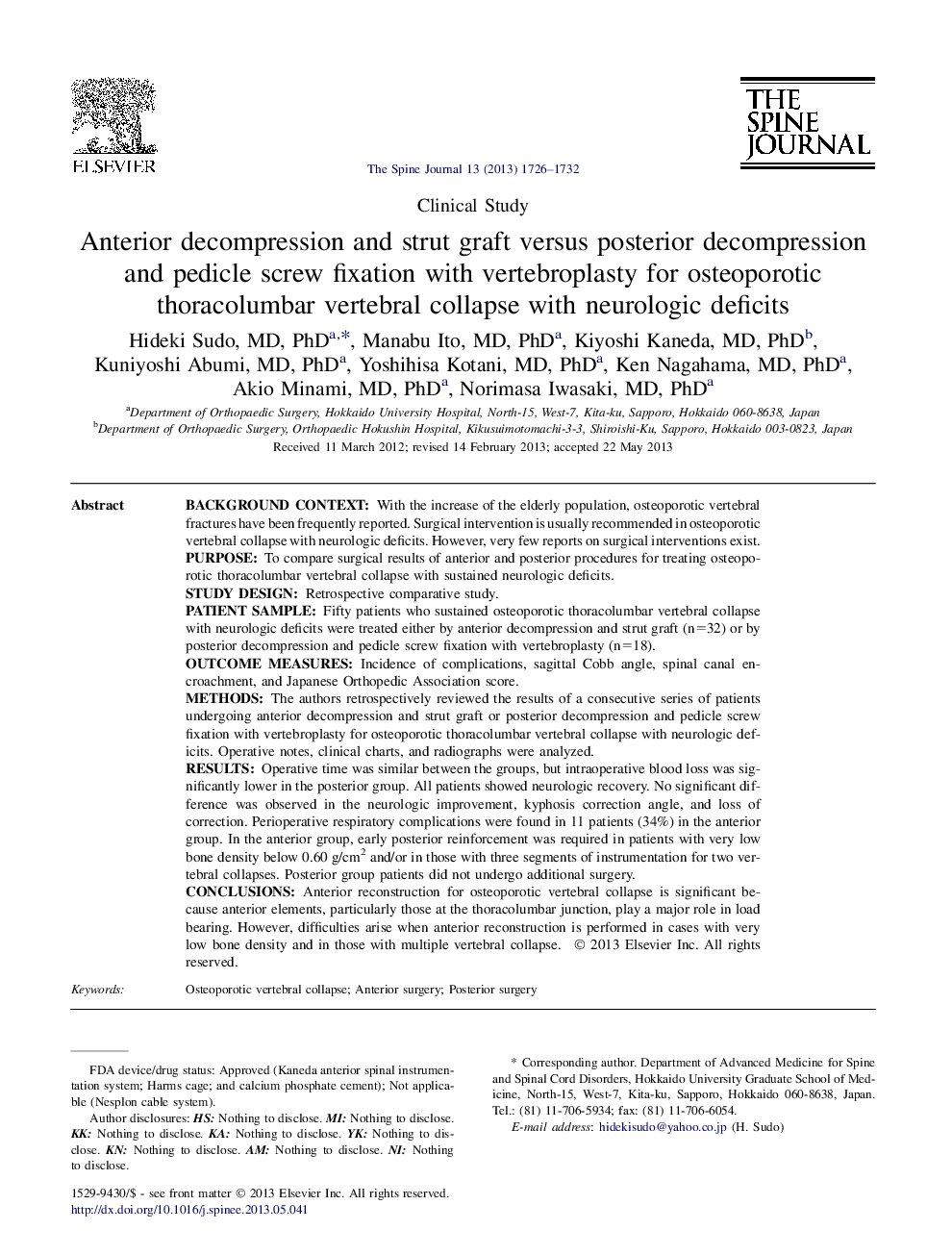| Article ID | Journal | Published Year | Pages | File Type |
|---|---|---|---|---|
| 4096393 | The Spine Journal | 2013 | 7 Pages |
Background contextWith the increase of the elderly population, osteoporotic vertebral fractures have been frequently reported. Surgical intervention is usually recommended in osteoporotic vertebral collapse with neurologic deficits. However, very few reports on surgical interventions exist.PurposeTo compare surgical results of anterior and posterior procedures for treating osteoporotic thoracolumbar vertebral collapse with sustained neurologic deficits.Study designRetrospective comparative study.Patient sampleFifty patients who sustained osteoporotic thoracolumbar vertebral collapse with neurologic deficits were treated either by anterior decompression and strut graft (n=32) or by posterior decompression and pedicle screw fixation with vertebroplasty (n=18).Outcome measuresIncidence of complications, sagittal Cobb angle, spinal canal encroachment, and Japanese Orthopedic Association score.MethodsThe authors retrospectively reviewed the results of a consecutive series of patients undergoing anterior decompression and strut graft or posterior decompression and pedicle screw fixation with vertebroplasty for osteoporotic thoracolumbar vertebral collapse with neurologic deficits. Operative notes, clinical charts, and radiographs were analyzed.ResultsOperative time was similar between the groups, but intraoperative blood loss was significantly lower in the posterior group. All patients showed neurologic recovery. No significant difference was observed in the neurologic improvement, kyphosis correction angle, and loss of correction. Perioperative respiratory complications were found in 11 patients (34%) in the anterior group. In the anterior group, early posterior reinforcement was required in patients with very low bone density below 0.60 g/cm2 and/or in those with three segments of instrumentation for two vertebral collapses. Posterior group patients did not undergo additional surgery.ConclusionsAnterior reconstruction for osteoporotic vertebral collapse is significant because anterior elements, particularly those at the thoracolumbar junction, play a major role in load bearing. However, difficulties arise when anterior reconstruction is performed in cases with very low bone density and in those with multiple vertebral collapse.
